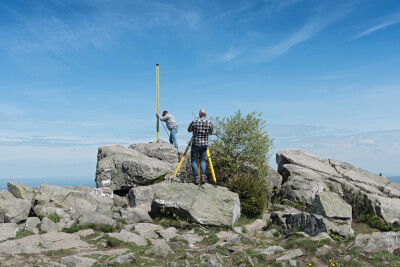I heard an interview with Ken Jennings (former Jeopardy champ) this week promoting his new book Maphead. It was one of those hour-long, call in, radio shows and I was surprised by many of the comments regarding the general public’s feelings about maps and their future in society. There were the normal conversations about errors and notations such as “Dragons Be Here” but the most surprising themes to me were the ideas about what qualified as a map, the intense feelings about the use of color, and the pessimistic view that so many have about the future of maps.
I don’t know about you guys, but I still consider myself a map maker. Just because I use laser scanners and photography instead of India ink and a protractor doesn’t change the fact that I am creating an image that represents a physical reality. So many callers talked about how they didn’t use maps anymore because they now just use the GPS on their mobile phones. Do they not realize that they are tracking their GPS coordinates on a map?! I remember trying to navigate with handheld GPS units before they had map displays and it was not fun. It’s almost as though the map is so ubiquitous that they don’t know they are using one. There seems to be a belief that only something printed on paper qualifies as a map; at the same time there is no new name for the same thing displayed electronically. As someone in the profession of making maps, I think I may be part of the problem. I rarely use the term “map” as I am striving to differentiate what I am making from the standard idea most have of a map. However, during this show it occurred to me that the general term may be better. When you think about the use of a map (informing one about the spatial relativity of objects) paper is but one form. Aboriginal songlines gave early Australians the roadmap from point A to Point B in the form of a song. One caller mentioned being blind and using tactile maps (basically textured scale topographic models) to learn about the physical layout of the world. Perhaps the fascination with maps is not the visual component but the ability to take in more information than can be obtained from a first person point of view.
I was astounded at the number of people who mentioned color as one of the things that they loved most about maps, especially older maps. This is a place where I know I can improve my deliverables. I often use standard web colors or those assigned by a CAD program. My main concern is typically visibility as opposed to anything artistic. However, when I think of the most enticing maps I’ve seen not one of them has linework in magenta or a black background. They are often composed of muted tones and desaturated colors. Previous cartographers seemed to pay a lot more attention to the use of analogous and complementary colors than most of us do today. Perhaps we should be thinking more about the overall impression (or “color context” in color theory terminology) that is produced instead of the stark visibility of each layer. I understand that the black background and saturated colors make for easier viewing on a monitor but there is obviously a feeling of something being lost in the exchange. Given the now infinite variation of line weight and style along with the interactive features available to us, it might be time to jettison the solutions we derived when CAD and GIS were new.
Lastly is the issue of the future of maps. During the program I kept thinking that surely someone would mention the holy grail of mapping: a 1:1 scale virtual Earth. Eventually they did, but in a very dismissive way. It was presented as a joke, a thought experiment in uselessness. It seems that no one considered the fact that interactivity removes the need for static scaling. I am enamored with the idea of a map of the world that can be zoomed in and out so that it removes the physical limitations that restrict our access in reality. But why stop at 1:1? I remember finding the maps of cell structures in biology textbooks to be the most interesting things in the book! These types of Galaxy to subatomic particle relationships are only possible with the type of dynamic maps that we can now produce through computing technology and displays. As we move toward this and increase our mobility in reality it seems obvious to me that maps will be more important than ever. I think that maps are like mathematics in that they can convey information regardless of language or cultural background. Add to this the increasingly large datasets that we collect about everything from land use to credit scores to toilet paper preference and maps seem like the only hope of managing this data in a way that informs us of their relativity to one another. After all, when it comes down to it, all data is spatial.





